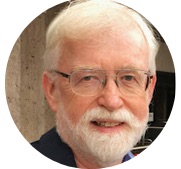
watch a dance performance by Su-Feh Lee accompanied by this work on my YouTube channel

The title refers to the pattern of trigrams in the I Ching known as the Primal Arrangement, based on pairs of opposites, such as Heaven and Earth (Ch'ien & K'un), Wind and Thunder (Sun & Chên), Water and Fire (K'an & Li), Mountain and Lake (Kên & Tui). In the musical work, this progression takes place in 8 sections, each ninety seconds in length, where each pair of four channels depicts the energy generated by these oppositions. When diffused through speakers arranged in a cube, the upper and lower sets of speakers reflect this relationship. The work is the complement to the Sequence of Later Heaven (1993) which depicts the trigrams as a periodic cycle.
The work, as with its counterpart, is entirely based on musical instruments found in Pacific Rim cultures, including the Javanese gamelan gongs, the Philippine patangok, the khaen from South-East Asia, the Korean kayageum, the Chinese guzheng and tam-tam, Japanese meditation bells, bamboo brushes, the rosewood keyed marimba from Central America, the Peruvian bombo and box drum, and the Chilean rainstick. These sounds are mixed together to form chords whose complex spectra become more apparent when the sounds are digitally resonated and/or stretched in time.
The composer is grateful to Sal Ferreras, Russell Hartenberger and Randy Raine-Reusch who provided the source material for this work, along with the Simon Fraser University gamelan, Kyai Madu Sari (The Venerable Essence of Honey). The work was commissioned with the assistance of the Canada Council by ACREQ.
Sequence of Earlier Heaven is available on the Cambridge Street Records opera CD Powers of Two.
Sound Example available plus detailed documentation on the WSP Database (truax@sfu.ca for guest access)
The work was also choreographed and performed by Su-Feh Lee in 2011, as can be seen here.
Spectrogram Analysis from the middle section of the work
(for further documentation, contact truax@sfu.ca for access to the WSP Database)
Technical note
The work was realized using the composer's PODX system which incorporates the DMX-1000 Digital Signal Processor controlled by a PDP Micro-11 computer. The principal signal processing technique involves digital resonators, time stretching and harmonizing of the sampled sounds with software for real-time granular synthesis and processing developed by the composer in the School for the Contemporary Arts at Simon Fraser University. The eight-channel spatial diffusion was realized with Harmonic Functions' DM-8 signal processor.